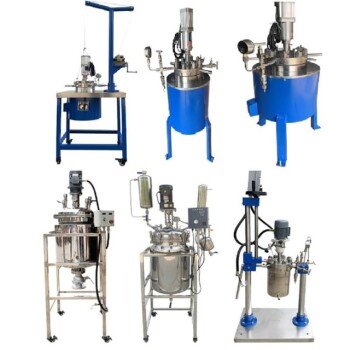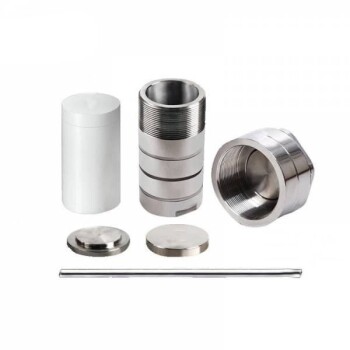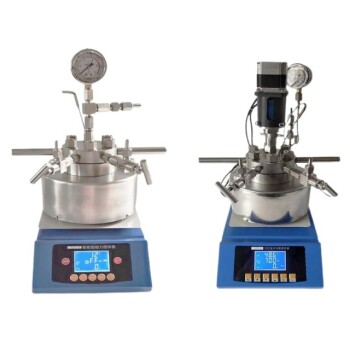A bioreactor is a complex system designed to support biologically active environments, typically for the cultivation of cells or microorganisms. It consists of several key components, each playing a critical role in maintaining optimal conditions for biological processes. These components include the vessel, agitation system, aeration system, temperature control system, pH control system, foam control system, sampling ports, and sterilization mechanisms. Each part is engineered to ensure precise control over environmental factors such as oxygen levels, temperature, pH, and nutrient distribution, which are essential for the growth and productivity of the biological material being cultivated.
Key Points Explained:

-
Vessel (Bioreactor Chamber)
- Function: The vessel is the primary container where the biological process occurs. It is designed to be sterile and capable of withstanding the pressures and temperatures involved in the process.
- Details: Typically made from stainless steel or glass, the vessel includes ports for adding and removing materials, sensors for monitoring conditions, and sometimes viewports for visual inspection.
-
Agitation System
- Function: This system ensures that the culture medium is well-mixed, which is crucial for uniform distribution of nutrients, gases, and cells.
- Details: Consists of impellers or stirrers that rotate to create a homogenous environment. The speed of agitation can be adjusted to suit different types of cultures and their specific needs.
-
Aeration System
- Function: Provides oxygen to the culture, which is vital for aerobic organisms, and helps in removing carbon dioxide.
- Details: Includes spargers or diffusers that introduce air or oxygen into the medium. The system is often equipped with filters to ensure the air is sterile.
-
Temperature Control System
- Function: Maintains the bioreactor at the optimal temperature required for the biological process.
- Details: Utilizes heating and cooling mechanisms such as jackets or coils around the vessel, connected to a temperature control unit that adjusts based on sensor feedback.
-
pH Control System
- Function: Monitors and adjusts the pH level of the culture medium to maintain it within the optimal range for the organisms.
- Details: Includes pH sensors and pumps that add acid or base solutions as needed to correct the pH.
-
Foam Control System
- Function: Prevents or reduces foam formation, which can interfere with the operation of the bioreactor and affect the culture.
- Details: Uses mechanical foam breakers or chemical antifoaming agents to manage foam levels.
-
Sampling Ports
- Function: Allows for the extraction of samples from the bioreactor for analysis without compromising the sterility of the system.
- Details: Designed to be easily accessible and sealed when not in use to prevent contamination.
-
Sterilization Mechanisms
- Function: Ensures that the bioreactor and its components are free from contaminants before and during the process.
- Details: Methods include autoclaving, steam sterilization, or chemical sterilants, depending on the design and material of the bioreactor components.
Each of these components is critical for the successful operation of a bioreactor, ensuring that the biological processes are carried out under controlled and optimized conditions. The integration of these systems allows for the precise control necessary for high-yield production in various biotechnological applications.
Summary Table:
| Component | Function | Details |
|---|---|---|
| Vessel (Bioreactor Chamber) | Primary container for biological processes | Made of stainless steel or glass, includes ports, sensors, and viewports for monitoring. |
| Agitation System | Ensures uniform mixing of nutrients, gases, and cells | Uses impellers or stirrers with adjustable speed for different culture needs. |
| Aeration System | Provides oxygen and removes carbon dioxide | Includes spargers or diffusers with sterile air filters. |
| Temperature Control System | Maintains optimal temperature for the process | Uses heating/cooling jackets or coils connected to a control unit. |
| pH Control System | Monitors and adjusts pH levels | Equipped with pH sensors and pumps for acid/base addition. |
| Foam Control System | Prevents or reduces foam formation | Uses mechanical foam breakers or chemical antifoaming agents. |
| Sampling Ports | Allows sample extraction without contamination | Designed for easy access and sealed when not in use. |
| Sterilization Mechanisms | Ensures system is free from contaminants | Methods include autoclaving, steam sterilization, or chemical sterilants. |
Ready to optimize your bioreactor setup? Contact our experts today for tailored solutions!




